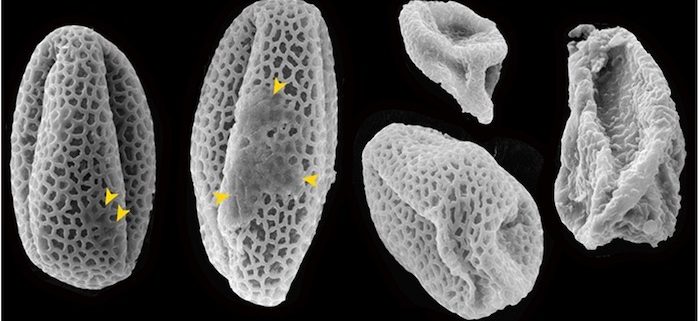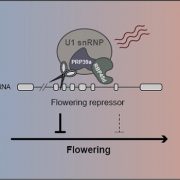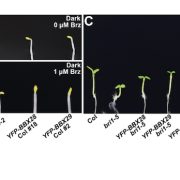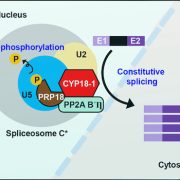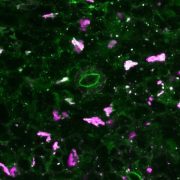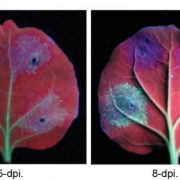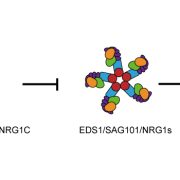Regulation of protein secretion in tapetal cells
Goodman et al. uncover the roles of ESCRT (Endosomal Sorting Complex Required for Transport) proteins in the exocytosis of plasma membrane and secreted proteins in tapetal cells during pollen development. The Plant Cell (2021) https://doi.org/10.1093/plcell/koab132
By Marisa Otegui
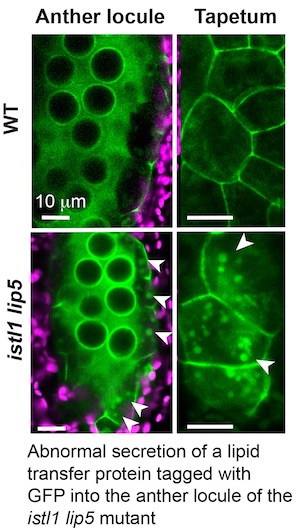 Background: The development of pollen grains in flowering plants requires the participation of a secretory tissue called the tapetum within the anther. Through its secretory activity, the tapetum is essential for the formation of the complex pollen wall. This tapetal function is mediated by both the activity of transporters at the plasma membrane and the release into the anther locule of proteins and other molecules packed in secretory vesicles. The tapetum only lives for 4 days in Arabidopsis, and we know very little about how its intense secretory activity is regulated during this period of time.
Background: The development of pollen grains in flowering plants requires the participation of a secretory tissue called the tapetum within the anther. Through its secretory activity, the tapetum is essential for the formation of the complex pollen wall. This tapetal function is mediated by both the activity of transporters at the plasma membrane and the release into the anther locule of proteins and other molecules packed in secretory vesicles. The tapetum only lives for 4 days in Arabidopsis, and we know very little about how its intense secretory activity is regulated during this period of time.
Question: We wanted to know how the proteins LIP5 and ISTL1, which are known to mediate internalization and degradation of plasma membrane proteins in other plant cells types and organisms, regulate the secretory activity of the tapetum in Arabidopsis.
Findings: Arabidopsis mutant plants that lack both LIP5 and ISTL1 function produce abnormal pollen grains due to defective tapetal secretion. Unexpectedly, we found that these proteins not only regulate the degradation of plasma membrane proteins but also their delivery to the surface of tapetal cells (exocytosis) during the formation of pollen grains. This double mutation also causes structural defects in the endosomes of tapetal cells.
Next steps: We are working now to understand why tapetal cells are particularly sensitive to mutations in the LIP5 and ISTL1 genes and how these two proteins mediate exocytosis.
Kaija Goodman, Julio Paez-Valencia, Janice Pennington, Annika Sonntag, Xinxin Ding, Han Nim Lee, Paul G. Ahlquist, Isabel Molina, Marisa S. Otegui (2021). ESCRT components ISTL1 and LIP5 are required for tapetal function and pollen viability. Plant Cell https://doi.org/10.1093/plcell/koab132


